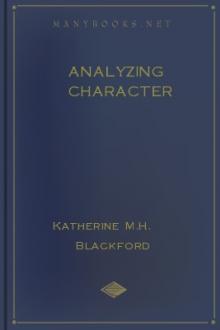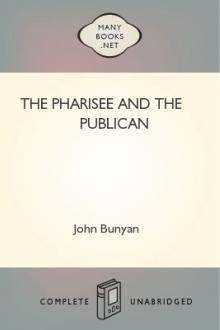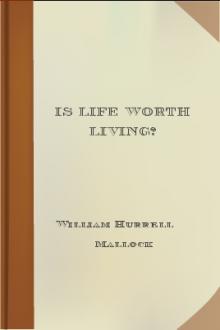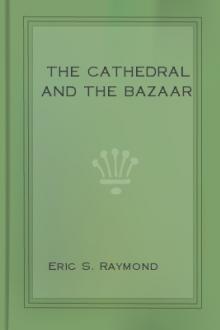Analyzing Character, Arthur Newcomb [popular romance novels .txt] 📗

- Author: Arthur Newcomb
- Performer: -
Book online «Analyzing Character, Arthur Newcomb [popular romance novels .txt] 📗». Author Arthur Newcomb
INDICATIONS FOR SUCCESS IN THE MINISTRY
Aside from spiritual qualifications, success in the ministry depends chiefly upon two talents: First, ability to speak well in public; second, social adaptability. The second is perhaps the more important. We have heard many ministers who were only indifferent public speakers, but who made a great success of their callings because of their social aptitudes, their ability to meet and mingle with all kinds of people, their cheerfulness, their optimism, their helpfulness, their tact and diplomacy. A traveling evangelist may depend principally upon his power as a public speaker, but the pastor of a church must depend far more upon his ability to make and keep friends among the members of his congregation and in the community.
The minister, of all the professional men, is most in need of ambition, a desire to please others and to help others, spiritual quality, humanitarianism, benevolence, faith, hope, veneration for the Deity, and for the supernatural elements of religion. The day has gone by when the solemn, joyless preacher can command a large congregation. People to-day want a religion which is bright and cheerful, which offers a surcease from the cares and sorrows of ordinary life. They want to be cheered, encouraged, inspired, and uplifted, rather than depressed and made sad and melancholy. Therefore, the successful preacher will not permit his intense conviction of the seriousness, earnestness, and solemnity of his calling interfere with his exhibiting always a bright, cheerful, and attractive personality.
To be successful the pastor must take an interest in all the members of his congregation; he must sympathize with them, mourn with them when they mourn, rejoice with them when they rejoice, cheer them when they are discouraged, counsel them when they are perplexed. Indeed, he must enter into their lives fully and wholly, also tactfully and diplomatically.
Perhaps the most successful preachers of the day are medium or blond in color. While those of dark complexion, dark eyes and dark hair, are more inclined to be religious, more inclined to take life seriously, more inclined to look forward and upward to the spiritual and the supernatural, and are also more studious, more capable of deep research and profound meditation, they do not, as a rule, have the social qualities, the aggressiveness, the cheerfulness, and the adaptability of the lighter complexioned people.
INDICATIONS FOR SUCCESS IN ENGINEERING
When engineering first became a profession there were only two classes of engineers, the civil and the military. Engineers in those days were chiefly concerned with the making of surveys and the construction of roads and bridges. The steam engine had not yet been made a commercial possibility, therefore there was almost no machinery in existence, and such little as there was did not require a professional engineer for its designing or operation. Nothing was known of electricity. Very little was known of chemistry and almost nothing was known of industry as it has been organized to-day. Since that time there has been an almost incredible development along all of these lines. As the result we now have almost as many kinds of engineers as there are classes of industry. There is the civil engineer, the mining engineer, the construction, the irrigation, the drainage, the sewage disposal, the gas production, the hydraulic, the chemical, the electrical, the mechanical, the industrial, the efficiency, the production, the illuminating, the automobile, the aeroplane, the marine, the submarine, and who knows how many other kinds. Indeed, there are also social engineers, merchandising engineers, advertising engineers, and even religious engineers. Naturally, it requires a slightly different kind of man to succeed in each one of the different branches of engineering, and it would be too great a task for the reader to try to wade through all of the qualifications here. It would also, no doubt, only result in confusion and a lack of understanding of the real fundamentals.
Fundamentally the engineer should be medium in coloring. The extreme blond is too changeable and usually not fond enough of detail to succeed in a profession which requires so much concentration and accuracy. Practically all successful engineers have the practical, scientific type of forehead. By this we mean the forehead which is prominent at the brows and, while high, slopes backward from the brows. Usually those succeed best in engineering who are medium in texture. The fine-textured individual, however, if he is qualified for engineering, will take up some of the finer, higher grades of it and make fine and delicate material or machinery, or will engage in some form of engineering which requires only intellectual work. Practically all successful engineers are of the bony and muscular type or some modification of this type. This is the type which naturally takes interest in construction, in machinery, and in material accomplishment and achievement. Engineering practice usually requires painstaking accuracy and exactitude. Indeed, this is perhaps more than any other one qualification fundamental for success in engineering.
THE PROFESSIONAL TYPE
This, then, is the composite photograph of the successful professional man: He is more mental than physical; more scientific, philosophic, humanitarian, and idealistic than commercial; more social and friendly than exclusive and reserved; more ambitious for professional high standing or achievement than for wealth or power. Unless the aspirant to professional honors has some or all of these qualifications in a considerable degree, he would better turn his attention to some other vocation where there is not so much competition. Those who have some, but not all, of these qualities would do well in other vocations, such as literature, finance, commerce, or manufacture. Many physicians become authors, inventors, or financiers; many lawyers become financiers or manufacturers; many engineers become good advertising men, manufacturers, or merchants. All such would have done better to begin in the vocation to which they afterward turned.
A good rule for the young man or the young woman to follow is to make up his or her mind to enter some other vocation rather than a profession unless he or she is markedly well qualified to outdistance the crowd of mediocre competitors and make an unusual success.
ex-Senator Root Photo by Paul Thompson. Fig. 41. Front face view of ex-Senator Root. The width of head, large, but well-formed and well-balanced features, firm mouth, chin and jaw, and expression of alertness and confident strength all indicate the unusually well qualified executive. Rev. Henry Ward Beecher Copyright, by Rockland, New York. Fig. 42. Rev. Henry Ward Beecher. A man of marked personality, shrewdness, ambition, courage, determination, self-reliance, persistence, and energy. Added to these were humanitarianism, reverence, optimism, kindliness, humor, eloquence, and organizing ability. Note high, dome-like head; prominent brows; fulness of the eyes and surrounding tissues; large, bony nose; long upper lip; firm mouth; square jaw and prominent chin; large, well-formed ears; short fingers, and shrewd, kindly expression. Rufus Isaacs Fig. 43. Rufus Isaacs, Baron Reading, Lord Chief Justice of England. Keen, penetrating, alert, analytical, resolute, self-reliant, courageous, persistent, non-sentimental, practical financial. Note comparatively low, wide forehead, long upper lip, thin lips, square-set jaw and chin, long, large nose, with somewhat depressed tip, large ears, and flatness of the top of the head. Hon. Elihu Root Copyright by Harris & Ewing, Washington, D. C. Fig. 44. Hon. Elihu Root, former United States Senator from New York. Practical, energetic, ambitious, intellectual, with courage, critical faculties, ambition, shrewdness, idealism, and a keen knowledge of human nature in excellent balance. Note high, long head; high forehead, prominent at brows, large, well-formed nose; prominent chin, general splendid balance of head and face proportions, and calm, poised, but keen and forceful expression. Harland B. Howe Fig. 45. Harland B. Howe, Lawyer. Practical, matter-of-fact, shrewd, non-sentimental, energetic, ambitious, determined, and courageous. Note wide, high forehead; prominent at brows rather square above; high head, large nose, short, thin upper lip, and square, prominent jaw and chin. Justice Horace H. Lurton Copyright by Harris & Ewing, Washington, D. C. Fig. 46. The late Justice Horace H. Lurton, of the United States Supreme Court. Excellent example of judicial type. Practical, matter-of-fact, comparatively unemotional, calm and poised. Note prominence at brows, comparative flatness just above temples, strong jaw and chin, calm, unwavering expression. Prof. William H. Burr Photo by Pach. Fig. 47. Prof. William H. Burr, of Columbia University. Member of Isthmian Canal Commission. A fine example of professional type. Great intellect, energy, ambition, shrewdness, determination, and constancy, with refinement, idealism, sympathy, and friendliness. Note high, full forehead; large, long, but finely chiseled, nose; high head, narrow and straight at sides; fine texture; friendly expression. Hon. John Wesley Gaines Fig. 48. Hon. John Wesley Gaines, Ex-Congressman from Tennessee. A fine example of the dramatic orator and politician. Refined, sensitive, responsive, courageous, ambitious, energetic, friendly. Note high, long head, prominent nose, short upper lip, prominent chin, finely chiseled features, and spirited expression. CHAPTER XI WOMEN'S WORKThis chapter is not written for the purpose of adding one whisper to the impassioned controversies at present raging over women's work. So far as it is within our power, we shall refrain from taking sides with either that army which contends that woman is in every way the equal of man and should be permitted to engage in all of man's activities on an equal footing with him, or with that other army which declares that woman's place is the home and that every woman should be a wife, mother, and housekeeper.
Doubtless there are many wholesome and needed reforms being agitated with reference to women's work. Doubtless, also, there are many pernicious changes being advocated by both the sincere but mistaken and the vicious and designing. It is not the purpose of this chapter to discuss these reforms or to favor or to oppose any of them. We shall, in this chapter, discuss the problem of vocation for women under present conditions.
BROAD SCOPE OF WOMEN'S WORK
The present day finds women at work in practically every field of human endeavor. There is no profession, business, trade, or calling which does not count women amongst its successful representatives. Nor does the fact that a woman has married, has a home and children, debar her from achievement in any vocation outside the home which she may choose. Madam Ernestine Schuman-Heinck, with her eight children; Elizabeth Cady Stanton, with her ten children; Katherine Booth-Clibborn, with her ten children; Ethel Barrymore, with her family; Mrs. Netscher, proprietor of the Boston Store in Chicago, with her family; Mary Roberts Rhinehart, with her children; Madam Louise Homer, with her little flock, and thousands of others are examples of women who have been successful not only as home-makers but also in art, literature, professional or commercial vocations.
Since this is true, it follows that, theoretically at least, woman may choose her profession in precisely the same way that man chooses his. Practically, however,





Comments (0)